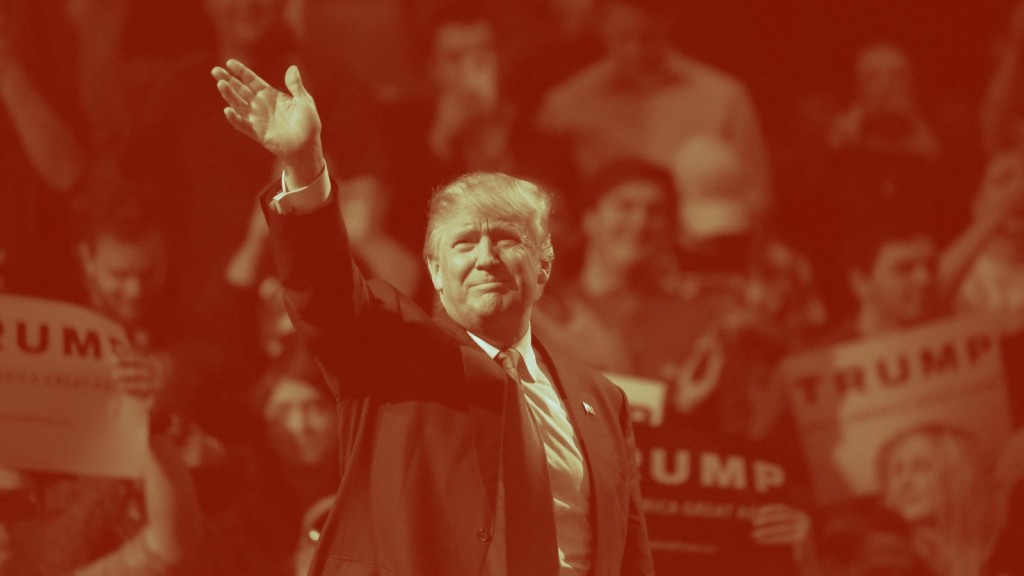Sections
Melting the rink
[avatar user=”malm” size=”small” align=”left” link=”file” /]
Wayne Gretsky’s famous ice hockey quote has become something of unquestioned trope in recent year with tech strategy pundits:
I skate to where the puck is going to be, not to where it has been.
So Ben Evans’ recent co-option and extension of it struck a chord with many observers:
Nokia and Blackberry were skating to where the puck was going to be, and felt nice and fast and in control, while Apple and Google were melting the ice rink and switching the game to water-skiing.
The relentless advances in artificial intelligence and machine learning in just the last few years suggest a similar argument can be made there. If it proves to be the case that Deep Learning can be packaged in a user-friendly way and applied across a wide range of verticals it would be a rink-melting game changer for those unprepared for it. A generalised and largely unsupervised approach for extracting features from labelled data may essentially reduce many narrow intelligence problems to mere compute cycles. The unemotionally efficient way in which AlphaGo has dispatched world Go champion Lee Sedol in the first two games of their epic encounter are a case in point. It’s been a chastening and eerie sight. NYT anthropomorphised proceedings by suggesting that Sedol was ‘walloped’ and he certainly played to the inhabitants of Anxious Avenue:
“I am very surprised because I have never thought I would lose,” Mr. Lee said at a news conference in Seoul. “I didn’t know that AlphaGo would play such a perfect Go.”
There’s a degree of public relations showboating at play behind the scenes, of course, as seems to be inevitable these days with most things involving DeepMind or its ever-present Founder, Demis Hassabis. Even so, it’s worth reflecting on the staggering array of state of the art software and data centre sized hardware platform that Sedol is up against:
For the Korea match, Hassabis says, he and his team are “laying down their own fiber” so that they have a good connection to a Google data center that holds such hardware [1,200 central processing chips and about 170 GPU cars]. “You’ve got a flexible supercomputer on tap that you can just dip in or dip out of,” he says.
Playing Go is a long long way away from anything approaching AGI. But the rate of progress begs the question ‘Could machines have become self-aware without our knowing it?‘ In all depends on how you define consciousness but at least at one level the answer might already be yes. Maybe reaching the higher levels requires us to more closely model the human brain connectome. In yet another media outing this time in the Verge, Hassabis predicts another step change in perception five years out perhaps the first clear indication of where we are in terms of the narrow (ANI) to general (AGI) transition:
I think in the next two to three years you’ll start seeing it. I mean, it’ll be quite subtle to begin with, certain aspects will just work better. Maybe looking four to five, five-plus years away you’ll start seeing a big step change in capabilities.
The progress highlighted in last week’s blog with Google’s Atlas demonstrated that advances in machine learning are not just limited to games. Washington Post reported the remarks of a leading roboticist who was suitably impressed with the Atlas:
Such a broad range of capabilities hasn’t been seen before in one robot.
Rolling Stone have got with the zeitgeist with a memorable and quite accessible two-part long form publication called simply ‘Inside the Artificial Intelligence revolution.’ Part 1 covers robotics, machine learning, DeepMind and Facebook. It carries a revealing profile of AI pioneer Yann LeCun now DIrector of AI Research at Facebook which says more about the social media algorithmic reductivity than anything else I’ve seen. It’s all too easy, once you get bitten by the Machine Learning bug, to recast all sorts of daily activities and interactions in terms of a feature vector. Even your users, it seems from Facebook’s experience to date, can be reduced to 4000 features:
One solution that LeCun is working on is to represent everything on Facebook as a vector, which allows computers to plot a data point in space. “The typical vectors we use to represent concepts like images have about 4,000 dimensions,” he says. “So, basically, it is a list of 4,000 numbers that characterizes everything about an image.” Vectors can describe an image, a piece of text or human interests. Reduced to a number, it’s easy for computers to search and compare. If the interests of a person, represented by a vector, match the vector of an image, the person will likely enjoy the image. “Basically, it reduces reasoning to geometry,” he says.
Part 2 focuses on Google’s self-driving car program, military robots and technological unemployment suggesting a connection between the political ascent of Donald Trump and the rise of the machines. Which ought to give pause for thought:
Last month’s White House economic report predicted that if a job pays less than $20 an hour, there’s an 83 percent chance it will eventually be eliminated by automation. But beyond that, it’s hard to predict the impacts. Unemployment and stagnant wages among blue-collar and less-educated workers have already transformed American politics and fueled the rise of Donald Trump – increasing automation will only accelerate these trends.

It may be that Universal Basic Income (UBI) is the only viable option in the long run. The robots will do the jobs and humans will distribute the proceeds. At least that’s the core idea underlying the approach. Logic, however, does not always prevail in times of huge societal transition. Venturing the suggestion that truck driving is in some way the mark of an unworthy life, for instance, may well incentivize many truck drivers to vote Trump if they aren’t already:
“I think it’s a bad use of a human to spend 20 years of their life driving a truck back and forth across the United States,” Mr. Wenger said. “That’s not what we aspire to do as humans — it’s a bad use of a human brain — and automation and basic income is a development that will free us to do lots of incredible things that are more aligned with what it means to be human.”
Big Data
- The story of how Telenor became a big data company without really intending to is interesting. Following a terrorist attack in Pakistan, they have been working with the government to tie the identity of individuals buying SIM cards with their IMSI, registering a population roughly the size of the UK in 4 months. The level of physical insight they have been able to gather as a result has proved very valuable. The approach is one that could readily be adapted to many other countries in Asia and Africa.
Apps and Services
- Bloomberg on how Snapchat built a business out of conspiring with kids and ‘confusing olds’ and created multiple routes to monetisation as a result:

- Key to understanding its appeal is the colourful DJ Khaled:
If you want to understand Snapchat, the insanely fast-growing and—to people born before 1990—straight-up insane messaging app and media platform, DJ Khaled is your Virgil. If you were one of the 100 million people who logged in to Snapchat each day during Super Bowl weekend, his thick beard and full frame were impossible to miss. You would have seen clips of him at an impromptu concert where he was mobbed by several hundred screaming fans waving giant cardboard keys, or at a raucous party sponsored by PepsiCo, or in a pedicab he hailed after the game. “Ride wit me through the journey [to] more success,” he captioned that last video, as his chauffeur pedaled furiously.

- Slack have introduced ‘awesome’ friction-free calling for your team:

- It’s not enough to persuade this disillusioned user from breaking up with a tool he once loved but is now “turning my workdays into one long Franken-meeting”:
With you in my life, I’ve received exponentially more messages than I ever have before. And while it’s been awesome to have such a connection with you, it has been absolutely brutal on my productivity.
3D printing and the IoT
- VFX outfit The Mill were responsible for putting together the ground-breaking video for The Chemical Brothers ‘Wide Open’ in which a dancer turns into a 3D-printed version of herself. They’ve now released a video that goes behind the scenes to reveal how they used a range of cutting-edge techniques to bring it to life:
- The video itself is on YouTube:
- Hackaday on Wiring, the “Arduino before Arduino” is a salutary tale of the darker side of open source – all take and no give:
Wiring basically incubated the idea of building a microcontroller-based hardware controller platform that was simple enough to program that it could be used by artists. Indeed, it was intended to be the physical counterpart to Processing, a visual programming language for art.

Mobile and Devices
- The Meizu PRO 5 is the highest spec Ubuntu Phone device released to yet:

- It seems the deal between Foxconn and Sharp reported last week has already foundered leading to much embarrassing recrimination:
Foxconn reportedly got cold feet after a 100-point list of potential contingent liabilities, amounting to 350 billion yen ($3.1 billion), mysteriously emerged (paywall) at the last minute, according to the Wall Street Journal.
Software Engineering
- Great read on How to Deploy Software from an ex-Github employee focusses on automation and repeatability and boils down to one basic guiding rule:
Spend some time and get your deploys to be as boring, straightforward, and stress-free as possible. It’ll pay off.
- Google have a new software engineering blog telling stories from the inside. It’s called bar.foo and has the tagline “Do cool things that matter”. There’s an inevitable reference to voice recognition which is admittedly cool, but nothing from anyone involved in supporting the Google ad platform which must surely have many engineers working on it. Wonder why.
Human Resources and Leadership
- How AltSchool’s CEO rebuilt Google’s performance review system to make it work for his startup. The end result is, ironically, not a million miles away from the sort of system Nokia had in place in its pomp with 360 degree reviews, Personal Development Plans (PDP), job levels and their ilk.
- Career advice no-one told you contains this pearl of wisdom. Here’s to the Third Door brigade:
“[All highly successful people] treat life, business, and success… just like a nightclub. There are always three ways in. There’s the First Door, where 99% of people wait in line,hoping to get in. There’s the Second Door, where billionaires and royalty slip through. But then there is always, always… the Third Door. It’s the entrance where you have to jump out of line, run down the alley, climb over the dumpster, bang on the door a hundred times, crack open the window, and sneak through kitchen. But there’s always a way in.”
- Fortune report on the all too human issues that have gotten in the way of the ideal vision of Holacracy at Zappos. Such as for instance the problem of residual hierarchy – it seems very hard for any human venture to erase it entirely:
Noel had wanted to transfer to Zappos’s culture team but found himself blocked by his manager. “As soon as I found out about how holacracy worked,” he says, “I was like, ‘Actually, my boss can’t tell me that.’ ” Noel’s ideas, which included weekday events where employees watch a movie in the auditorium while working on their laptops, gained traction. Now he works in the Fungineering circle, a kind of events-planning/pep squad. “My worst day at Zappos is still better than my best day anywhere else,” he says. “I can’t imagine going back to traditional hierarchy anymore.”
- Still there are upsides. Like no apparent clean desk policy:

- Without hierarchy, one wonders how Zappos do 1-1s. Here are some thoughts on how to organise good ones. At heart a 1-1 is a conversation and best treated that way. Probably not this kind of conversation though:

- McKinsey are suggesting that to be a better leader you need to observe more and react less. Which is seriously hard given everyday provokations. Unless you’re an AI leader shorn of all that human baggage. Actually the post is really a thinly veiled praise piece for the benefits of meditation and mindfulness. And limiting your time on email.
Trump
- Quartz outline the playbook by which Donald Trump can make himself the first American Dictator an Arturo Ui for the Tenties. It makes for uncomfortable reading but most everything about Trump is. He remains essentially an entirely unpredictable proposition:
By unsettling the implicit rules of the game which govern our politics, he has further eliminated constraints on his presidency. Will he eliminate affirmative action in federal hiring? Or will he strengthen it? No one knows. Having thrown into doubt the unwritten rules that have constrained other presidents, he has more scope to act as he sees fit.
- One thing he has succeeded in doing is transform the Republican party into a populist largely inward looking movement which is likely to have profound longer term ramifications if he wins the White House. It’s likely that America will enter a new age of Isolationism. Many commentators are openly aghast with his irresistible progress with copious use of terms like disaster and nightmare. It’s really important to understand that within America, however, Trump’s message is resonating with millions for better or worse:
“his claim that Washington is broken and can only be fixed by an outsider resonates with many Americans, and not just arch-conservatives. So does his demagoguery about illegal immigrants and the supposed threat that Muslims present. What is perhaps more surprising, at least to Washington-based conservatives, is how many Republicans are also embracing Trump’s populist lines on ending free trade, protecting Social Security, and providing basic health care.”
- The harsh realities of the job should Trump make it were outlined in a surprisingly frank interview with Barack Obama in The Atlantic that created somewhat of a furore in Europe. It provides genuine insight on the all too real limitations a US President faces in imposing any sort of will or order on a complex and, in many ways, increasingly fragmented world.
Society
- FT review a book called “Engineers of Jihad” that suggests a correlation between education and violent extremism. The authors are a sociologist and political scientist and they do seem to have it in somewhat for engineers claiming they “show a preference for authoritarian systems and have more simplistic views about how the status quo can be changed“. That said their figures are arresting:
As the authors explain, “the odds on finding an engineer in [our] sample is seventeen times greater than what we would expect if engineers were as likely to radicalise as the male adult population in general”. Medical doctors are also over-represented by as much as 10 times above the norm.
- Perhaps that is something that could be determined with a global Kaggle-style data science exercise on the dump of ISIS documents that was conveniently “open sourced” this week.
- That wasn’t the only blow that Machine Learning delivered to would-be Jihadists this week. MIT Technology Review reported on work going on in Jordan to identify terrorists from photographs showing them making V-signs. The method sounds like a fairly straightforward application of classification and feature engineering albeit to date on a relatively small cohort of some 500 samples:
This … analyze[d] various triangle shapes between these points, their relative size and the angles they make, and so on. … They also used a second method to analyze the shape of the hand using a number of statistical measures. Combining these two methods creates a total of 16 different features that can be used in identification. … They then used two-thirds of the images to train a machine-learning algorithm to recognize different V signs and used the remaining images to test its efficacy.

- The Brexit campaign may be fuelled by same sort of non-immigrant working class constituency that is supporting Donald Trump in droves in the US. In the UK, they are the force behind UKIP and according to this evidence primarily driven by concerns around immigration.
